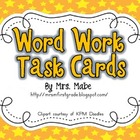“In order to act as an educator for the child, the environment has to be flexible; it must undergo frequent modification by the children and the teachers in order to remain up-to-date and responsive to their needs to be protagonists in constructing their knowledge." (Gandini, 1998)
When looking for ways to improve the classroom environment, I sought out an art project that would also provide an opportunity for learning. Taking advantage of an open window space, I found the idea of using recycled milk jugs to make art. Not only did it turn out beautifully, but it also sends the important message of environmental responsibility and sustainability to children. Instead of using brand new art supplies, we made use of what we already had.
Teacher Prep
1. Save milk jugs. At the centre we use 14/week so it did not take long. Educators may also ask parents to contribute.
2. Wash them out thoroughly. Unwashed plastic exposed to sunlight in the window will not produce a smell to enhance your classroom environment!
3. Depending on the age of the children, you might want to cut off the handle and the spout of the jug.
4. To make the "paint", mix together about 1 cup of glue, a few drops of dish soap, and as much food colouring/water colour to get your desired colour.
NOTE: This amount of paint will go a long way!
Process
1. Have children cut out any shape that they want.
2. Using paint brushes or glue spreaders, have them decorate their pieces. Some may choose to spread it out, or make a drizzle pattern.
3. Hole punch either end of the piece and string them together using fish line.
* We used a fallen tree branch to add an earthy component to our window art.








